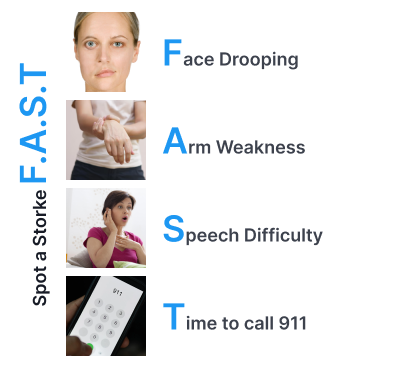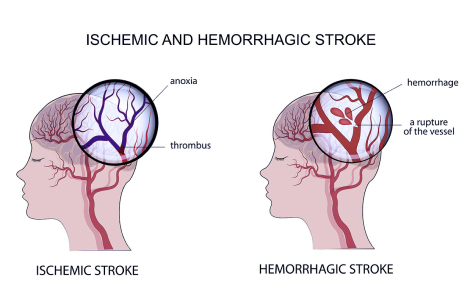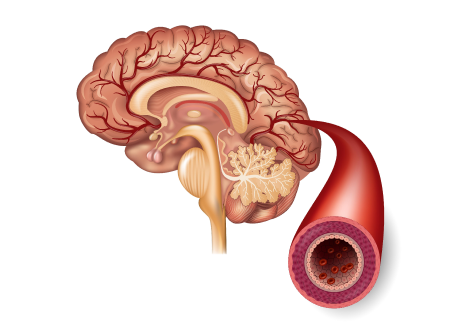Vascular Neurology is a division of Neurology that evaluates, treats, and studies diseases which affect the structure and function of the blood vessels supplying the brain. Our main purpose is to provide the best possible care for our patients with stroke cerebrovascular disease. Our goal is to thoroughly evaluate the cause of your stroke and significantly reduce or eliminate your risk of stroke improving. your quality of life.
A stroke is when an artery in the brain may become blocked (clot) or bleed without warning. When this happens, blood and oxygen can no longer reach critical parts of the brain. Neurons denied of oxygen begin to die within minutes and parts of the body begin to shut down. A stroke can cause permanent loss of speech, movement, and memory.

There are two different types of strokes. A stroke caused by a blocked artery is called an ischemic stroke. This is the most common type of stroke. A stroke caused by a blood vessel rupturing is called a hemorrhagic stroke. Hemorrhagic strokes account for 15 percent of all strokes nationwide. Finally, a transient ischemic attach (TIA) is caused by a temporary clot that does not cause permanent damage. These are typically referred to as "warning strokes”.
An ischemic stroke is caused by blockage of an artery by an embolus or thrombus, affecting blood supply to the brain.
A thrombotic stroke occurs when diseased or damaged cerebral arteries become blocked by plaque (atherosclerosis). This type of event is responsible for almost 50 percent of all ischemic strokes. Cerebral thrombosis can be divided into two categories that correlate to the location of the blockage within the brain:


A "mini stoke" or "warning stroke" occurs when symptoms of a stroke occur then quickly resolve on its own without lasting damage. An obstruction (blood clot) occurs for a short time then tends to resolve itself. This "warning stroke should be taken seriously. Up to 1/3 of the people who have a TIA will have a stroke within the first few days to week after the TIA. It is important to seek a specialized neurologist called a Vascular Neurologist to reduce your risk of stroke after a TIA.
A hemorrhagic stroke occurs when a blood vessel ruptures, causing bleeding in the brain. The blood accumulates and compresses the surrounding brain tissue. There are two types of hemorrhagic strokes which are called a subarachnoid hemorrhage (SAH) and intracerebral hemorrhage (ICH).
Subarachnoid Hemorrhage (SAH) occurs when a blood vessel on in the brain ruptures and bleeds into the space between the brain and the skull. This bleeding is most often managed by highly specialized neurologist and neurosurgeons. If your hospital does not have one on call, make sure you are transferred to a hospital that does for the best possible outcome
Intracerebral Hemorrhage (ICH) occurs when a defective artery in the brain bursts causing a hematoma or swelling of blood within the brain tissue.


There are two different types of strokes. A stroke caused by a blocked artery is called an ischemic stroke. This is the most common type of stroke. A stroke caused by a blood vessel rupturing is called a hemorrhagic stroke.Hemorrhagic strokes account for 15 percent of all strokes nationwide. Finally, a transient ischemic attach (TIA) is caused by a temporary clot that does not cause permanent damage. These are typically referred to as "warning strokes”.